|
the big nOte files - 2003/03/10 |
in short:
- candy zappa's book
- too many options for march 8: 4fm radio show and arte tv show, but i'll be at
the residents concert
- john trubee's updated & reworked interview with carl franzoni
- more on carl franzoni from various other sources
- a picture (by tom wyma) of a fabulous piece of arwork by vito paulekas
(if you the names of carl franzoni & vito paulekas don't ring
a bell, re-read your "freak out" liner notes !!)
- additions to the don 'sugarcane' harris discography, with a lot of info
on don & dewey 7"s
- australian solicitors censoring this very united mutations website !!
- the arf society's zappanale package has arrived: a 3cd set and two dvds
- good grief...
- mr.cook, who has joined the residents on their tour, is in a
band called land of thin dimes and they have an album out
- years ago, freddie white played zappa compositions on two of his
albums, both have been reissued in one 2cd set.
- afroskull news
- a couple of new arf dossier pictures
- a persuasions discography
- a bunch of new frank zappa bootlegs
news
* * * * *
|
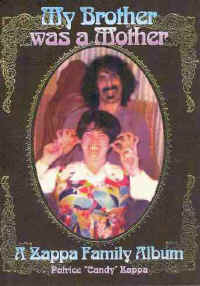 |
|
NPS
RADIO
4FM
Radio 4
and webcast
Saturday
March 8, 23.00-01.00 Dutch Time
For you
Z-Freaks out there;
the last
1 and a half hour of the show features
TERRY
BOZZIO
live
recording in Austria with the BPS Trio
NAPOLEON
MURPHY BROCK
(from
BALLS we play Tra-Lynn part two & Let Me Still Be Me)
FRANK
ZAPPA
(from
HALLOWEEN we play: Ancient Armaments/Camarillo Brillo/Muffin
Man/Black Napkins (the Deathless Horsie)..
that's
half an hour, people!
pretty
soon we will feature a lot of stuff from the Zappanale in Germany.
Have
Fun, Stay Tuned.
We
will continue......
(info: piet de doelder) |
|
| and
there's more
Frank Zappa on Arte, 2003/03/08 at 21.40: "Metropolis": Frank Zappa repeated on 2003/03/ 09 at 01.40 (in the middle of the night) |
|
* * * * *
june 2002, john trubee sent me the first part of an interview he had done
with carl franzoni a couple of months earlier. instead of finishing
transcribing it, he did another interview with mister franzoni in november 2002
and reworked the whole thing.
los angeles magazine "scram" will probably publish it in a couple of
months, but john is giving us a pre-view:
As john said: " The original partial interview I already sent you was done with Carl in January, 2002. I did a whole new interview with him in November 2002. The completed 2nd interview is what I sent to Scram and what I can send to you. I never bothered to finish transcribing the 1st interview."
thank you, john !!
|
The song's lyrics decried America's culture of mindless conformity and consumerism with such lines as: |
|
| Mister America walk on by your schools that do not teach Mister America walk on by the minds that won't be reached Mister America try to hide the emptiness that's you inside When once you find the way you lied And all the corny tricks you tried Will not forestall the rising tide of HUNGRY FREAKS, DADDY..." and Mister America try to hide The product of your savage pride The useful minds that it denied The day you shrugged and stepped aside You saw their clothes and then you cried 'Those HUNGRY FREAKS, DADDY!'..." This song became the anthem of my alienated and disenfranchised youth and I carried its lyrics around in my head for years thereafter. |
the mothers of invention |
|
Across the continent and nearly three decades later I wandered across the campus at Santa Rosa Junior College in Santa Rosa, California at an open house in May, 2001. I headed into the student lounge to check out an art exhibit and I noticed a strange-looking older man sitting on a sofa. He wore short pants, a leather vest, a leather hat festooned with various buttons, tattoos covering his exposed arms and other exposed flesh, assorted wrist bracelets, beaded necklaces, and a presence which screamed that he had seen and done much in his life. One aging earth mother hippie-type women was introducing him to another woman there, saying "..and have you met my friend Carl Franzoni?" My ears pricked up at the mention of that name. A
little while later I walked over and introduced myself to Mr. Franzoni
and it turned out that he was indeed the one for whom 'Hungry Freaks,
Daddy' was written. I was privileged to get better acquainted with
Carl after that. I interviewed Franzoni at his artifact-strewn apartment on Sunday evening, November 17th, 2002... * * * * * JOHN: I'd like to start when you first arrived in
LA and were involved in a mail order business. |
|
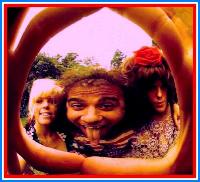 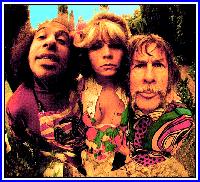 |
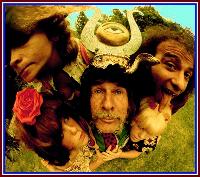 |
| pictures taken from "mondo
hollywood": carl franzoni, vito, szoe, captain fugt and others © robert carl cohen |
|
| One day I'm with Joe and we're having lunch
on Sunset Boulevard and we go to this place called Ben Frank's which
was the local place to eat. It was right there on Sunset near La
Cienga. It's still there, a modernistic-looking place. So we went in
for lunch and we're sitting there and there's three hippie kind of
girls sitting there--but there's not hippies yet--we're businessmen
and they're bohemians. Now I had been in North Beach before I went to
LA. I was in North Beach with the beatniks, so maybe these were
beatnik women. They wore crazy clothes, not like the usual, and they
way that they painted themselves was very different that anyone else.
So we're sitting there having lunch, we're talking, and I'm looking at
this girl and she's small and has black hair and brown eyes--she's
Italian. I know it, okay? So I said to Joe--he knows, he's Italian
himself--'let's go over before we go and talk to them." So I go
over and there's three girls sitting there and I said "Listen,
I'm looking at you from across the room and I'd like to speak to you
or get involved with you somehow, is that possible?" And she said
"Yes! I'm a painter and I'm painting at Vito's studio, he's my
mentor, and would you come and see my paintings and I'll introduce you
to my friend Vito". And as I'm walking away she said "And
bring your friend". Her name was Mary Mancini. Joe and I decided in a couple of days to go there. Same time of day, instead of lunch we go over there. JOHN: What was the address of Vito's studio? CARL: 303 North Laurel at Beverly and Laurel. Eastman's gym is upstairs. She had said as an afterthought "If the door is locked take a coin or a key and tap on the door until somebody comes and opens the door". We get there and it's a funky dress shop with sculptures in the windows. I think it was Vito's wife who answered the door and we go in and you go straight through, not too far into the thing and then you make a sharp right and you look down and you could see a fluorescent light downstairs in the basement. So we descend the stairs and we go into this place and it's like no place you've ever been. It's painted like if you opened a tomb of the Mayans and this place is painted with little things all over the walls. And then you see sculpture, half-done sculpture, and then you descend the steps and make a turn to the right and there's two painters sitting there painting. One of them is this woman Mary Mancini. She was a school teacher and they couldn't let her be a school teacher because the girls at the Catholic school where she worked like her too much and she liked them; she had lesbianism going within her world and she was also a whore. She'd fuck you for money or fuck you for the painting. So I was interested in her painting and I did buy the one that I first saw when I went down there--I paid $350 for it. I remember that I had the money and I wanted the painting and I was trying to get in her pants, true. But after a while that wasn't the object because I saw her predicament, I saw what she was into, and I employed her. I took her into our business. I told the other guys about her and they made her their secretary. She found me a secretary that was very Catholic and I told her right in front that if I had a secretary I was gonna fuck her. So if she's gonna find somebody for me she'd better get ready. The one she got was a Chicano girl and she couldn't stand me--so I just said "Mary, I've got to get another secretary and I don't want her to be upset with me because I'm interested in her and she's not. So she went off into the blue and she got me another secretary who I married. Cecelia Destaffano was gone by now. JOHN: What happened to her? CARL: Cecelia Destaffano tried to commit suicide because I wouldn't pay attention to her anymore. I tried to bring her into Vito's scene and I tried to get her to understand my life was changing. I wasn't a dancer yet but I was practicing or I was going to dance classes and I was finding that thing with a group of people. JOHN: Were you dancing at Vito's studio? CARL: Well, no, he was on La Cienga Boulevard, he had time in a place that was a theater, the Coronet Theater, and upstairs in the Coronet Theater there was dance studio. People that were in the movie 'West Side Story' used the facility. So the main guy dancer from that film--we would comp off of each other. He would see what we're doing and we'd see what he was doing. Vito ran this class and both of the classes were really good and we'd watch each other's classes for a while because you can't stay in a dance class very long; they want you to get out. They don't want you to be stealing from them. We had a good rapport with them. Anyway, I'm doing this stuff and Cecelia doesn't want to go along with it. She wants me to be a straight businessman and take care of business with her. To me it was boring because I was seeing and finding other things. 'La Dolce Vita' was in theatrical film release at the time, all those Swedish movies, and Fellini movies were to be seen...if you saw those movies at that time it would change your life. Plus, the people that were coming out, all the artists that were coming--from young kids to old people...(photographer) Richard Avedon, Bert Schoenberg who had done paintings on Sunset Boulevard, big boards and had one in front of a rock 'n' roll club, Valerie Porter who was to became my girlfriend later--they were doing their work and coming to Vito's place and it was becoming a grand scene. Now before I showed up Vito had a lot of movie stars who would come there and sculpt. Joe De Santis and Jonathan Winters and Mickey Rooney--Vito was involved with them. Vito would hang out with them and they would invite him. I remember going to Palm Springs with my wife after Cecelia, and she was pregnant and so was Sue (Vito's wife). We went to see a guy who was connected to Jonathan Winters and he was a famous character actor...once in while I'll see these guys on TV...the movie 'Around The World In 80 Days' has most of these people that Vito knew at this time. Including Steve Allen, including whatever was the ferment of that time...this was before 'Laugh-In'. Anyway, Cecelia couldn't make the grade. I get a phone call and Cecelia's in the hospital (from a suicide attempt). I go to the hospital and I look at her and she's starting to sputter about and I go 'Listen girl, lemme tell you something. You got three kids. You don't have to fuckin' kill yourself for me. What the fuck am I? Don't think that you have to do anything like that. Why are you ending your life? You're a beautiful woman"--you know, I kind of yelled at her. She's on this cot. And I'm yelling at her and I'm saying "It's just the end of a thing. We can't make it. You're not interested in what I'm interested in." So it was cool. She had given me a brand new MGB car, it was a two-seater, a sports car, and I gave it back to her. I said "I can't accept this car from you because our love affair is over." I just preceded in doing what I was doing. I had this Jewish woman, really beautiful woman, who was a dancer, loved to dance. Cecelia liked to dance but she wouldn't get out there. This woman was different but she was a straight woman, no bullshit about her. Her name was Laurie Zimble. She'd come out on the dance floor with me and she'd rock out but she would not get involved with Vito either. JOHN: Didn't you say that when you first met Vito and his crew you'd just go to watch them dance but you just hung back and didn't dance for the first six months? CARL: Yeah, for about three to six months I just went with them to different places. We went to a rock 'n; roll place on Fairfax Avenue and I would just kinda peek in--but I was't ready (to dance) yet. I felt not ready. So I didn't go in. That happened a couple of times and then we switched places to Sunset Boulevard where that painter had that billboard outside, that painting of a sunburst or whatever the hell it was--by Bert Schoenberg who was really famous in Hollywood at the time, everybody wanted to own a Bert Schoenberg painting. So we switched to this place (to dance) and it was a very funky place, it was right across the street from Ralph's on Sunset Boulevard near La Brea. I started dancing in there, I just let it go. Also my answering service was near there--yeah, everybody had to have an answering service... JOHN: That's something from a bygone era--an answering service—because now everyone has answering machines or digital voicemail. How weird. CARL: Yeah, it cost you a fortune. JOHN: When you did your business you gave people the phone number for your answering service and they'd leave a message with an operator? That seems like the dark ages now. CARL: Right. Anyway, that was where I really got into the dance. Then we moved west on Sunset Boulevard more to the Whiskey because the Whiskey was starting to open up...oh, I know what I was saying--there were no white bands yet. There were black bands and only black bands--Motown and that stuff was just hummin'. And Elvis Presley was just barely Elvis Presley. He was still a kid, you know. All the Motown was happening and there were no clubs on Sunset Boulevard. There was nothing there. Further down there were two clubs--there was that place at Vine and Sunset, it's still there, it's on the east side of the street--the Palladium--and across the street from that was where the shot the old TV show 'Queen For A Day'. It was the Aquarius theater. Probably the Palladium is where the black bands played the most. It was right there near Capitol Records, down the street and there were other things there--so they would scoot them in there, give you a show, see who they were, and so forth. There were no clubs except that little club and then Gazzari's was open, and then there was one that was run by this woman who owned the Body Shop--I can never remember the name of it but that's where Tina Turner turned out, that's where the Iron Butterfly turned out. It was up near the Whiskey. |
|
 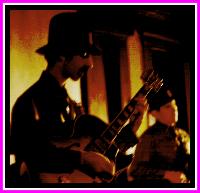 |
 |
| frank zappa / the mothers of invention (pictures taken from "mondo hollywood") © robert carl cohen |
vito (from "mondo hollywood") © robert carl cohen |
| And then there was this little tiny club
where I told you the Doors played for three months--nobody even
thought about them Somebody from the Whiskey came over and said
uh--'cause the Whiskey was turning. The Whiskey was this straight
club, it was just a dance club. It was women in the box...Frank Zappa
played there and he had to play a straight number to get in there.
They would yell at him if he played something crazy. He had to play
straight music in there. Before there were any white bands, there were no Byrds, no Buffalo Springfield, there was nothing. They were in incubation in the garage, all of them. Lenny Bruce played in a place that became the Playboy Club and we would go up to see him and his mother...they'd work this club--his mother Sally. JOHN: What would his mother do? CARL: Well, she was an ex-stripper; I don't know what she did. She worked for me. Joe Scallacci's brother was a pop singer, and he was an O.K. pop singer. He sang like Vic Damone or somebody like that, y' know, straight stuff. He was O.K. I put money behind him with Cecelia because we were like pop people. JOHN: What did Lenny Bruce's mother have to do with this? CARL: She was an agent that could get him a job. I went to Las Vegas one time and we went there because he was opening in one of the rooms in Las Vegas. So we went to see him and gave him our kiss of, y'know, kiss of --to become famous. He never did--at least I didn't think he did. But back in Hollywood we were dancing to records or R&B black bands. R&B black bands got pushed out of Hollywood because of the white music. We would dance to whatever they had. The dancers Vito had at his dance class would go out at night. We'd have a destination--"O.K. this is the destination tonight, this is where we're going. We would meet there. We would go out a couple of times a week and then it got more and more because we became more and more popular and each club vied for our attention to come to their club because if we would go there the club would become famous. JOHN: Because you brought all this energy and all these people... CARL: Brought the energy and brought a dance that nobody else had ever seen. We were giving an original dance here. These were artists that were dancing. We were doing an art form. JOHN: How large was your average group of people with whom you'd go out to the clubs? CARL: Well, I'd say no less than ten but I remember at one time when Herbie Cohen let us into the Shrine Auditorium, he let a hundred of us dancers in there. He counted us as we went in--Frank Zappa's on the stage. But the band we most liked to dance to was the Gauchos. The Gauchos were from Fresno. I tell people about the Gauchos all the time. The were an eleven piece band with horns. They did 'La Bamba' like nobody else did 'La Bamba'--they put 'La Bamba' on the map because they had brass for it. They were a tight band, they wore uniforms and when you danced to them you got so fucking high from it--I remember the club that was the Playboy Club--we shredded it! We were dancing on the bar and we were dancing on the tables, (laughs) the place was almost ready to come apart! JOHN: What kind of uniforms were the Gauchos wearing? CARL: They were wearing gaucho uniforms, they would wear sombreros but they would take them off. In the beginning (of their gig) they would play a low-keyed music and they had a good thing going. I've always told bands don't start up high, start down low and work up to the crescendo. JOHN: If you come in high you have nowhere to go. CARL: Yeah, where can you go from there? You go straight down. Anyway, that's what was going on in Hollywood at that moment until somebody said '"listen, there's a band that needs a job". JOHN: Are you referring to the Byrds? CARL: That was the Byrds. They were a bunch of funky asshole dudes, they didn't know what to do with themselves. They had gone to San Francisco and had all of their equipment stolen from them out of their station wagon which was parked out in front of the club. Not only did they have their stuff stolen but they had their tires stolen off of the station wagon. They came out and there was nothing there. The thieves had ripped that thing to shreds. JOHN: Were they then rehearsing at Vito's studio? CARL: What happened was somebody told us that they wanted an audition so Vito said "yeah, I'll give you an audition. Come over to my place after dinner". So they could set up in the dress shop and people downstairs could hear the music and then he would come upstairs after the audition so he could tell them whether or not he wanted to hire them. So he told them that, but what happened was the first time they had an audition they didn't show up. So one of the guys in our group had heard them before--we went over to their house and he just ate their asses out. He said "you're not professionals. You can't even show up for an audition" and blah blah blah. McGuinn was the leader of the band and he had just start to cut the record 'Mr. Tambourine Man'--he said to those guys "we'd better go". So the next time they came and Vito hired them and he had a place for them to play. He rented this place on Melrose Avenue, upstairs, and it was like a church on a couple of nights a week and it was a big hall. It would fit 300 people. He sold tickets for $1.50--packed house. When you walked into this room with the Byrds there was another band there, the opening band--I don't know who it was, nobody I remember--all over the walls were anti-war Vietnam signs. JOHN: What year was this? CARL: This was '65. All over the walls Vito had done these signs. He had maybe 25 to 35 signs all over the wall. He stood at the door and took $1.50 from each head. He gave the bands the dollar and kept the 50 cents. The next night the Byrds' managers asked us "would you come to this place on Sunset Boulevard and do your dancing there?". So we went to Ciro's which had a raised dance floor, it was probably 40 feet by 25 feet raised dance floor, it happened to be a red room. In other words all the tapestry on the wall was red. JOHN: I read that Ciro's was a happening nightclub in the 40's and 50's that had subsequently fallen into disfavor and obscurity the '60's and then this thing with the Byrds revived it somewhat. CARL: The old guard...it was a place to go and get drunk, it had a really nice stage , a low stage and the dance floor right below it. The Whiskey had a high stage and Ciro's had a low stage so you could see right into the band. If you see a photo of Dylan with the Byrds you could see right over the tops of the dancer's heads. The seating was huge; 10 people could sit at a booth. A good majority of those kids from the dance at the church on Melrose were too young to get into Ciro's. You had to be 21 to get in, y'know, they sold high booze--sold the whiskey and the funny drinks. So there we show up the next night at Ciro's--maybe 15 people in our group. Right thought the door--didn't pay anything. Who's in the audience? We weren't the only ones in this place. The place, like I said, was ringed by these big red leather booths and they were all full. Nobody was on the dance floor and there's a black woman in the booth spinning records. There's no other band there except the Byrds. They're not on yet. She (the DJ) plays something really nice, not too fast. We have one booth right by the dance floor, almost like it was saved for us. The rest of the place was filled. I looked around me to see one movie star after another...Sue Lyon, Sonny and Cher, anyone playing young roles, probably people in their forties were there, too--not too many of them. At that time I'm 30 years old, Vito's 50. The DJ plays her first song, nobody goes out there on the dance floor. Well, she plays Wilson Pickett and I always liked his music, I got to know him later. When Wilson Pickett worked at the Trip he would do a medley in the middle of his show and he's ask for dancers to come out of the audience to dance so I went there once because I heard that and he called me up and I danced my butt off and he said to those people "this guy's the guy!" (laughs). And then he would keep bringing me back like Chuck Barris did when I was on the Gong Show; "one more time". So a Wilson Pickett song is on there (at Ciro's) and I'm waiting for my own people to get out there because, y'know, what the fuck did we come there for? Nobody got up. I have friends there, we've all been dancing for months getting ready for shit like this. I'm not thinking in those terms that I'm getting ready for it, I'm thinking "why aren't we dancing? What happened to Vito? What happened to Sue?" Because they were there. So anyway, I get up. I get up and go on the dance floor by myself solo, nobody with me 'cause I looked around me and I'm seeing the women I'm with are reluctant to go out there. I just go out there, get off to the side, not right out in the middle but off to the side right in front of a lot of booths and start dancing. Then I'm out there maybe 3 or 4 minutes--I may have done a solo, I don't know, I may have done the whole solo--that's when Vito and Sue and the rest of them came on the dance floor. And we're just doing it and then all of a sudden the whole place jumped on the dance floor all at once. |
|
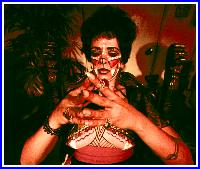 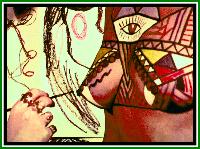 |
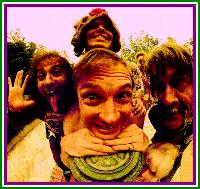 |
| helen, valerie and the freaks from l.a. (pictures taken from "mondo hollywood") © robert carl cohen |
|
| Now what started, I repeated that thing
forever at all the places--Whiskey A-Go-Go I was always the first one
up there--they sold tickets over me. They never gave me any money!
They'd only say "go in Carl, go on up there." I would give
them a fucking show where movie stars would come in and be like this
(makes open-mouthed astonished expression), just look at me like
"what the fuck is this? Where in the hell did he come from?"
There were times when I was dancing with Eartha Kitt where I'm dancing
with Mia Farrow or somebody like that and I'm on the dance floor and I
turn and there she is! Y'know, and I'm dancing with her! When she gets
off that dance floor she doesn't come to me and say "hey, that
was pretty good" but she just wanted it to be known that she got
up and danced with Carl Franzoni. Because at that place they waited
for me to show up there every fuckin' night. And night after night,
sometimes 7 nights a week I would go up there and dance. I would dance
for 3 fucking hours. Because when I went with the Byrds I remember
there was a place called the Peppermint Lounge in San Francisco, it
was on Broadway, it was across the street from the old place where I
worked, where I was bartender. It was a marathon. We were the only
fucking band there and they made those guys do 6 or 7 sets. And they
lived upstairs and Carol Doda (the famous stripper) was living on the
same floor with them and she didn't have any big bosoms at the time,
she was just this fast little waitress chick that could sing--and she
lived in the same apartment. I'm talking about the Byrds. So for 2 weeks I was there every night with them. I don't know where I even lived; I have no idea where I lived while I was living in San Francisco. Probably stayed with somebody in the Haight Ashbury or something like that. JOHN: Were there any other dancers there? CARL: Yes! There were several dancers--they had a group of people that were following them--Bob Roberts and his girlfriend Karen--she was barely 18 and he was barely 18, but somehow we got in this club 'cause they had fake IDs. There were others, too, that came there and danced with them. JOHN: Then afterwards you went on the road with the Byrds? CARL: When we went back to Hollywood their management came to me and said "listen, we want to give you a deal. We want you to go with them". Now, we're having trouble with McGuinn... JOHN: What was the trouble with McGuinn? CARL: He didn't want us to go. JOHN: Why? CARL: It would upstage him. And that's the way he treated us all the way through this-- one month on the road with him. JOHN: Being a snothead? CARL: He wouldn't tell the audience we were with them--we had to fight with the audiences--we were like something that came out of the blue and he didn't protect us. Because I got punched several times in different places like Minnesota and Ohio. I remember in Youngstown, Ohio somebody slugged me right in the fucking stomach. JOHN: Why did they do that? CARL: They didn't want you to dance other than the way they were dancing. It was that line dance--they had the fucking line dance where the women would line up on one side and the men would line up on the other and they would come at each other. That was the dance of the day. And here we come in and we're doing this total freak out dancing. They didn't call it freak out because freak out was not coined until Frank Zappa coined it. We were just freaks to the people in Hollywood. But that's what we called ourselves. JOHN: You mentioned that you were touring with the Byrds and that they met with some management and money people in Florida and then after that you never saw them again. CARL: No, that wasn't it. Our base was Chicago for all this stuff. We worked out of Chicago, we'd go to Ohio, we would go to Kentucky, we would go to Minnesota, and so forth. When you're out on a tour you have a base place and you work in Chicago, too, and you work in Indiana because those are the surrounding states. JOHN: What year was this? '65 or '66? CARL: '65. Up til then we had hit Denver, Colorado because that's where we caught our bus. Our bus was waiting for us in Denver. We flew into Denver. That was the beginning of almost stadium tours. You gotta figure you have a certain amount of people that are hearing from the underground about this band that's gonna come; you should hear this. Up to then they're only watching the Temptations and people like that. All these guys that are doing this entrepreneurism are all new at it. Even when you go into Canada. Even when you go to Minnesota. They're all new entrepreneurs that have heard about this band and they're gonna capitalize on it, and it works because every time we went into a hall it was jammed. Sometimes it was so hot, I'm talking about physically hot, about 100 degrees, and I'm doing these totally crazy spins and these people are circling us watching what we're doing. The question you asked me is what happened when they went to Miami. So we were in there 2 weeks, we're coming from the west to the east to Chicago so we're hitting Denver, we're going to Wyoming, we're going to Nebraska, we didn't work in Wyoming but we worked in Nebraska and Iowa and we're working our way to Chicago. So when we go to Chicago we're gonna make a southern tour then--Ohio, Kentucky, Indiana, and Missouri. OK, so the Byrds get there on their second week and the Byrd's management says "go to Miami, Florida"--they tell the Byrds that. Now, they're not taking us. They told us "you sit tight in Chicago in the hotel rooms and just relax, rest yourselves because the tour is another 2 weeks". OK? So for 3 days they were gone. When they came back they were different people. They had been swallowed by the capitalist entrepreneurs who were their mentors, who gave them their money. All those guys, everyone one of them, were poor except for maybe David Crosby and Jim McGuinn. The rest of them were just dirt poor dudes...Michael Clark and Gene Clark were like farm boys, never had any money in their lives. That's the way I met them. They were living in a cold water pad, never had anything to eat, girls might bring them a package of food or something out of a fast food place, something like that... JOHN: Where was the cold water flat? CARL: It was on the fringe of Beverly Hills and Hollywood, it was right off of Doheny somewhere. And they were living over a garage. They didn't have any hot water in that place. McGuinn and David Crosby didn't live there--the other 3 lived there. So they were poor guys and they didn't have shit and Michael Clark wasn't a very good drummer anyway, he was originally a conga drummer who they gave a set of traps to and said "go wild!" He didn't know nothin' about those things. JOHN: On their records the Byrds used studio drummer Hal Blaine to play drums. CARL: The Byrds records were manufactured. Their producer was Terry Melcher, who was Doris Day's son. He had all the money he wanted, he could buy any musician he wanted, and McGuinn was the only one on the track. JOHN: Didn't you say that Crosby and McGuinn would fight a lot? CARL: They all would fight, including their manager Jim Dickson. They would fisticuff, there would be blood all over the floor in those recording studios because they hated each other. They couldn't get their shit together. 78 takes?--come on! I once went out with some friends because I knew that David Crosby was singing in some offbeat place in Beverly Hills at some little place. I knew about this place because he asked me to come there and I listened to him play a mandolin and something else and he was really good at it, he was worth listening to. He had a beautiful voice, they all had beautiful voices, that's what made them what they were. It was a blend of really fine voices. And Chris Hillman, the Byrd's bass player, had bluegrass training. His young life before that--he knew a lot about music. JOHN: The Byrds moved off into their thing--and then how did you met the Mothers of Invention? CARL: Well, it was because the Byrds fired me from their tour because what happened was the last night they said we should assemble at this high school at a gig and all through the tour I was tormented about not having sex with anybody. All those guys (the Byrds) were getting fucked every night, they would have 3, 4, 5 teenage girls knock on their doors and they would just gobble them in. I was rooming with Brian McClaine who was their roadie and taking care of their equipment -- so we're so fucking tired but nobody's giving us any attention, the female dancers we had weren't giving us any attention because they're after the Byrds because they're their daytime girlfriends. So one pops up for me and she says "listen, I wanna get laid". So I went in the hotel room with everyone around me and I'm spending time with her. So I did an ultimatum. I said "yeah, I wanna go to this gig". Derek Taylor (Byrd's publicity director) told us to go there because he was setting us up for England to go visit the Beatles. He was gonna take the dancers into England and we would become the most famous thing but, y'see, again, McGuinn was against it. So I'm working against them. The Byrds are so astounded by what's going on to them that you can't even talk to them. I'm not a musician, I can't talk to them in musical terms except they do know that I know what a song is and whether it makes it or not. McGuinn asked me what I thought about '8 Miles High' and he asked me about a couple of other songs and I'm telling him what I feel when I'm dancing, he can see it! Because when they're doing certain music I just ride with the music and I'm doing spectacular in my fucking brain about what the music is. They were the finest musical group in the white category as far as dancing was concerned. There was no question that when you got on the dance floor with the Byrds doing that number, those 5 guys, that was like heaven. If you put them beside the Gauchos--that's different story. You got a thing that's so big and so strong, y'know, you just let your body go anyway it can go. Frank Zappa was like that if he played the blues. If his band played the blues, all those funky, nowhere musicians he had back then, they could really fuckin' play the blues because they were all raised with the blues. They were all southerners (?) and people who had done that all their lives, when you could get him to change into a blues thing you got a dance thing going. JOHN: The Byrds let you go when you delivered your ultimatum? CARL: My ultimatum to them was: "This girl's gonna get on the bus with us and go to this dance concert". JOHN: Who was the girl? CARL: The girl was a local girl from Flint, Michigan who was very cute and I gave her the money to fly back to LA to hang out with me and see if she wanted to be my girlfriend. She lasted about 2 weeks and then she was gone. I don't know whatever happened to her, I have no idea, but I had so many girlfriends that she had to be really strong and she wasn't a very strong person. But she was my groupie--I had one fuckin' groupie. So anyway they said "no, it's against our policy and it's against the insurance that she can't get on the bus." So I said well maybe I can bring her in a cab. There was no cohesiveness about it so I said "OK, I'm just not gonna go. That's it. I'm going back up in the hotel room and ride her ass some more, that's what I'm gonna do". So that's what I did. And when it came to taking pictures Derek Taylor had a special photographer there waiting for me. He didn't get any pictures. My dancers without me were like going in 6 directions. I was their coach and so forth. When I got back to LA I went to get my last check from the Byrd's management and they said "you're no longer a member of this organization", gave me a check, and that was it. JOHN: Then how did you run into the Mothers of Invention? CARL: We were invited to a party at the house of Carl Cohen. We get there and these very funky-looking men were there and they had "bobby" hats--not quite stovepipe hats, but because they didn't have any hair they were hiding their no hair. That was my thing with them for a long time about hair. I always encouraged them to grow their hair. Even Frank didn't have hair because he was working out in the sticks and you better not have any hair out there. They were playing in Pomona. I went out there. I was interested in him and I let him know I liked him and I liked those guys and he came to Cantors and you have to understand Cantor's is lit up. He came in there and he's a weird-looking dude among all these crazy-looking people so he fit right in and he was probably still wearing that hat and he said "I'd like to talk to you." In Cantor's the thing was not to table hop. Because we, Vito's dancers, had come into this place and made it a hit, it was folding when we came into the door with 25 people. Our whole thing had been at Ben Frank's. But what had happened at Ben Frank's was it got so popular from us that nobody could get in the door. Our group would be at a table with 10 people in a round booth and the rest of our people would be right next to us in other tables. You could kind of pick up on what we were doing but we would have so much fun in this booth that everybody was cracking up all the time so everybody would be listening from the other tables. It got so that everybody was hearing about it that they all came there. I remember seeing movie stars sitting there awestruck at what was going on there because so many people were outside. Caesar Romero, I remember seeing this big face of Caesar Romero so well-dressed, he was just like he came from a movie set with a carnation and stuff and he's sitting at the counter watching what was going on. It came up among us that they had told us twice at Ben Frank's it was getting too heavy for them and that every time we didn't show up they could handle the order flow. They hired more people, they had more waitresses, but they just couldn't handle the load. 50, 75 people waiting in line to get in--in the middle of the night??? After 2 o'clock in the morning? I said let's case out a few other places, ask around, what's going on, and somebody said this place on Fairfax Avenue called Cantor's has a nice delicatessen and a nice bakery and has good bean soup...somebody mentioned what was going on there, probably we'd all been in there once or twice anyway--they said they're gonna fold. They can't get any customers. So I talked to Vito and he said the next time they give us the shit at the door at Ben Frank's we're telling everybody to head to Cantor's. So 25, maybe 35 people one night at 11:30, quarter to 12 descend on Cantor's. They're like "what the fuck is this all these people showing up all at once?" and then from then on it was just like it was at Ben Frank's only 3 times as many. It just grew so that if you're ever at Cantor's it's a double restaurant because they shut one side down and then on the weekend they'll open up the other side and it's just as much seating on one side or the other. And then they have a third thing upstairs where you can have parties. So the one side with the deli and the bakery is the side we went into and I remember it was kinda dark and dingy. And then they lit the place up and the bean soup and the Buck Benny's--the place had a thing with movie star's names on sandwiches. So we go down there and make this place, and about 3 months after that is when we met Frank Zappa at this party that Herbie Cohen was shooting for the movie 'Mondo Hollywood'. This is the first shooting and the band is Zappa's, it's called the Mothers, the Mothers, not Mothers of Invention, Mothers--out of Pomona. So, got to meet him, not very much dialogue, thanks for the good dance music, playing blues mostly, they're not playing any of those songs that he wrote--not yet, they're not even in the book yet, they're not even recorded yet. They're just playing that top 40 stuff. The party's a success: full-on people, movie stars there, too--because in this movie this guy Carl Cohen goes from all aspects of people, he even goes to the Whites. The Whites in LA are the highest social climbing family. I know exactly where they live, they live on Vine Street into the next...wherever it is, where Vine Street ends. So we're showing up at the White's to go in their backyard and they get rid of us because they see all these freaks. Cohen goes into there's and does a whole thing he does in 'Mondo Hollywood'...it's a series of vignettes about Hollywood, the Whites are in it and we're in it. There's a scene with me at a waterfall and I'm standing at the top of the waterfall and it's like I'm pissing the waterfall. Carl Cohen said in some of the interviews he's done for years "whatever happened to Franzoni? Why doesn't he ever speak? Why doesn't he ever say anything about what went on in the 60's?" The truth of the matter is that Carl Cohen didn't give me any fucking dialogue. He gave Vito dialogue and he gave a lot of other people dialogue and he didn't take any dialogue from me. in the movie. There's no dialogue from me. No questions asked me. He had the chance to ask me questions and he never did. JOHN: You're getting your chance to talk now. CARL: Well, it's my chance now. Carl Cohen's alive. He's still waiting for me to make a statement. But he's never checked up on me. Probably if I had e-mail he might check up on me. There's a lot of people that would. JOHN: How did you end up dancing with the Mothers? CARL: Because I gave Frank Zappa so much information. Because I would hang out at his house when he had that yellow Chevrolet station wagon. I knew he didn't have any money and his groupies would help him, his wife and Pamela Zarubica would help him and these Cherry sisters would help him. He didn't have anything; he was a poor dude and he didn't have any income. He was filthy and dirty and for weeks he wouldn't take a fucking bath. His wife says that, too. She would come to his house--she thought he was disgusting. Zarubica turned her on to him. It was love thing that nobody around them ever thought would happen. I hung out with Frank and he needed us because we were famous as dancers in Hollywood. He started working at the Whiskey and that's when the Whiskey had to make a turn because right up to then they didn't even have rhythm and blues in the place, they had these surfer bands. JOHN: What year are we talking about? CARL: '66. the Whiskey was giving Frank Zappa a bad time about what music he's gonna play and they didn't have a stage yet. The Whiskey had no stage--it was built later. It was built after. Here's what it was: you walked in the door, there was go-go girl in a cage and underneath her was the band. And then there were cages all around the room, maybe four cages around the room, and other women were working those cages. So it was like they were in jail or something. JOHN: Pretty wacky. CARL: Pretty fuckin' wacky, right. JOHN: Did you show up and dance with your dancers? CARL: They didn't want to let me in. the management was like "what the fuck is that?". Because the clientele were surfers, the finer Beverly Hills surfers because Beverly Hills was only a few feet away from the Whiskey, just 2 blocks. We were frowned on and we just coming back and finally they let us in. We had to pay to go in there. I didn't wanna pay those fuckin' people. I didn't like them. Then it started getting liberal and they started hiring Chicago and all these other bands. I told you the Doors came from next store. At the same time Them is playing with them. The Doors were playing Them. Them were playing Them. Them were a bunch of drunks from England. Them and the Doors got to like each other because they were playing each other's music. I remember one night Van Morrison and Jim Morrison being on the same bill and they're playing each other's music. Jim Morrison was not flamboyant. Jim Morrison was a guy (laughs) that looked like he came out of a poetry reading and he was this meek fucking guy that'd get up there and really sing a good song, right? It was like going to the Troubador and hearing a Troubador kind of a guy singing. It was this dope and all this shit that happened to him that made him into this fucking monster so at the end he killed himself or--what happened to him? I don't even know--did he kill himself? JOHN: He O.D.ed in a bathtub in Paris. CARL: Yeah, whatever. But it was all that stuff and getting to the crux of the matter--it's just like the Byrds went to Miami and came back changed. Well, it's the same thing that happened to Morrison, it's the same thing that happened to the woman who swallowed the sandwich Mama Cass--the same thing happened to all of them. When the corporate structure gets ahold of you, you're a changed person because you know you have all this money you never had before and you know that capitalism, is behind you and you're their slave. They've taken you over and you're just a commodity. They use all the publicity they can to make you what it is. If the Stones didn't have publicity they couldn't go into the stadium in Oakland. The Stones dumped Bill Graham for 8 million dollars. That's not a lot of money now but at that time it was a lot of money. He had set them up with publicity to do a nationwide tour and the Stones, Mick Jagger gave him the finger and said "fuck you, we're not gonna do it, we're tired of you ripping us off." Because that man was a ripoff. He had certain people that he would help. We knew, at that moment, walking into his office, I had helped him, I had done stuff with the Mothers of Invention, the Byrds and so forth, I had done stuff with them, and he turned my ass down for some stupid little fuckin' gig? He turned down our street theater (Carl was a member of a Bay area street theater troupe in the early 70's called Free Store) and his derivative where he came from was theater in the street, was the San Francisco Mime Troupe--and he wouldn't give us a fucking gig? Or wouldn't even look at us? Then there was something wrong with him. For us, the Stones deserved to get away from him. Later on he made it up with them and made more money from the Stones but for the Stones to dump him was fine with me. When I walked out of Graham's office with two highest members of our theater troupe--he turned us down like that--as far as he was concerned I wanted to give him the fucking finger 'cause he was an asshole doing that. And he came to an end with his entrepreneurism and burning people and did whatever he did-- he came to the end of his life in a tragic, rotten way. He died electrocuted. My feeling about him was that he had this terrible rock 'n' roll group whom Frank Zappa despised... JOHN: What group was that? CARL: The Grateful Dead who had no integrity as a band--all they were was a publicity stunt with Bill Graham--and he just built them up. For Christ's sake, anyone in comparison to the Jefferson Airplane and that group of people--it was like, see, in the early part of my existence in San Francisco I remember going to see these great, holy people whose names I have on the tip of my tongue. You went to Pacific Ocean Park and there was a big hall there and there were thousands of people sitting there--they were the early hippies--they were the early people involved with these movements--dope was not their thing, God was, or some mystical thing like with the Grateful dead it's like a mystical thing behind them-- and it was a farce. Because their music was never up to anything that the Jefferson Airplane did. Never anything up to a lot of the bands—Moby Grape or any of those fine bands that came out of San Francisco. And the (the fine bands) were played down and Bill Graham always made sure that the Grateful Dead always had the best of everything, this crappy fucking band. JOHN: Did you and your dancers end up regularly dancing with the Mothers? CARL: We went onstage with them, we had a kind of a contract, a verbal contract with them. JOHN: What was the verbal contract? CARL: To take so many dancers and show up. The movie 'You Are What You Eat' ended with us--Vito, myself, and a guy by the name of Sheldon Jaman who's one of my best friends, we're the same age. He was with Vito before me, he was a hairdresser in Beverly Hills. I still see him, he visits me with his rich wife. The movie ends onstage with Frank Zappa in black light and strobes. So, you see us only in part, here and there and we're moving so fast it's almost an unbelievable thing that you're seeing. And the audience sees this crazy thing that's happening in front of them. This music, this powerful music, it's probably blues, I'm sure it's a blues number because it's as high as it can go and the flash of this light...(director) Barry Feinstein is onstage with other cameras on the stage and they're shooting from all angles as this thing ends in 'You Are What You Eat'. JOHN: What the story behind that early Mother's song 'Help, I'm A Rock'? CARL: I'm with Frank one day and he's visiting a young girl right there at La Brea at the top of La Brea where Franklin turns into La Brea and she's living in apartment there. He says "come on, let's go in this place, there's a hot chick in there." He must go into the bedroom with her--some kind of a sex thing or whatever they were doing and I'm standing there waiting for them in the vestibule of her house and she has like, a rock thing. I always carry felt pens with me so when they come out I said to the girl "I'm giving you a present." I give her this present, a rock, and on the back of it says "Help, I'm A Rock". It's a rock I wrote on and Frank made it into a song. |
|
| JOHN: At this time you regularly danced with
the Mothers? CARL: I was the only one that was paid. Cherry Wood was paid and so was Jeanne paid. We were their voices, we were the voices on the record. We never got any individual money for it (Freak Out!), no residuals from it, one time Frank got me out of jail, it cost him $750 along with $750 from Peter Tork. He wanted the money back and he asked me to come back when I met him in Toronto Canada and I refused and when he went to get on the plane the plane was searched, they were looking for me--so they knew I was around. I worked for Frank in Toronto, Canada where I did an opera with Roy Estrada (bass player for the Mothers of Invention), at the end of the gig I give the audience my butt, I pulled my pants down and gave them a B.A. It was a fine rendition, the place was shredded, the audience was clapping for 10, 15 minutes. We even had to come back and give an encore. I remember there was an encore. |
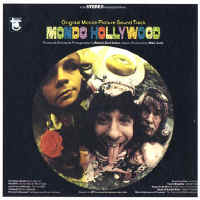 |
| the "mondo hollywood" lp cover © robert carl cohen |
|
| JOHN: I read an excerpt of an interview
with Zappa where he said that you were on tour with them one time in
Texas. He said that you wore tights explicitly outlining your big
balls or you had something stuffed down there and that you were
dancing and the really straight kids didn't know what to make of this
spectacle of Carl's balls... CARL: I wore different colored tights and if you wore tights the impression of your penis and your balls was very apparent. So maybe at this time I was wearing red ones and I went into the TV studio and it was straight afternoon show, dance party, right? This was a dance party TV show live in the afternoon in Dallas Texas or wherever it was. And I'm in tights and Frank introduces me and I come on the set. And we went in there and whatever song we did was uptempo and the kids loved what they saw, they danced to it, but the switchboard lit up and they took an actual count of over 300 people calling in and saying to the TV station "You'd better get those people off! We'll come down there, we'll lynch you people!" We did an even better one than that in Detroit, Michigan. We went over to Windsor (Canada) next to Detroit and we went into this TV station and it was a news thing, right? We went into this news broadcast and they said OK, we'll do a promo for you for your gig. So this was the promo: we got a buncha Cokes, small Coke bottles and we had a couch that was sitting there and I started stuffing the stuffing of the couch into my mouth and I was blowing it at the camera and in between I'm drinking Cokes because Coke was the advertiser. It was a commercial for Coke so we gave them a Coke commercial they would never forget. But I'm shredding this couch and I'm blowing it and throwing at those guys and we're all doing some kind of a number with each other and we're all drinking Coke. I got 2 Cokes in each hand and I'm drinking 4 Cokes--y'know, just going crazy on it. JOHN: How did that whole scene peter out? CARL: I stopped dancing with Frank because we had a gig in maybe Pasadena or somewhere and Herbie Cohen said "no more". Art Kunken who ran the Free Press wanted to be the ombudsman to see if he could reconcile us. Because I'm telling the guys in the Mothers they're getting ripped off and that it's Herbie's fault. and here comes Mutt to back him up. And I said to Mutt & Herbie Cohen's face's that that they're gonna rip Frank off and that Frank should get away from them and go out on his own. They'd dumped the Mother's original manager Mark Cheka, a fellow artist who was our friend. I said they should take Mark Cheka back and then we'd work with them more. But Frank said no...it wasn't really settled, but we knew when we left that place there was no gigging with him anymore. That was '67. The Mothers went to New York directly after that, in fact, Herbie said to Frank "Let's go because you can't stay around Hollywood, these freaks will get you dumped." Frank says to me "I want you to come to New York with us" and I said "Going with Herbie Cohen? I'm gonna go into the lion's den?" I said "I'm gonna stay here with Vito because believe that whatever I'm doing in the world, Vito is my world, not you because you're fleeing." But I was there for him when he came back and Frank's wife Gail said "we need a place to live." I ended up giving her the place I lived which was the log cabin. They were supposed to have the place next door but it was too small. I told Gail "go over to the landlady and she'll give you that place"--and it wasn't big enough for them. We were getting poor, I was with this guy who got me busted for cocaine and he says "We can't live here anymore anyway, I'll pay for a house down in Hollywood." So we went out and rented it and that's how I got busted. Frank took the log cabin over. I was there the day Alice Cooper got his record contract because his manager was one of my girlfriends and she got him signed. Both Cooper and Wild Man Fischer got signed on the same day to Straight/Bizarre Records. I was standing there when it happened. JOHN: You said you visited Lenny Bruce shortly before he died? CARL: Less than a week before he died. The people I with whom I was involved in the mail order business were all from New York and they were all from Coney Island where Lenny Bruce and his mother originated. That's where they were from. So all these guys--John who worked at the Whiskey as the soundman was also Lenny's soundman and he was his roommate. So he knew what was going on the house. Then the guys I was involved with, these Jewish guys named the Bealli brothers--they all had been raised together, they all knew each other. One of my partners, Sid Weinstein, he was also a heroin addict, they were all heroin addicts and they came west to Hollywood. And they all knew each other. But there was another guy, too, who became a quasi-movie star--he did maybe 2 or 3 movies then he was out. I can't remember his name but he was a good friend of mine. He was a bodyguard of theirs, too. JOHN: You said you showed up to his house will all his legal papers spread out on the floor? CARL: He was in litigation with so many courts because of what he was saying. He had no secretary. Vito would send him a secretary once in a while to type up his papers for court. Once in a while Vito would send up a secretary that Lenny liked, he'd have an affair with her. I remember there was a woman that came to me through Europe because my girlfriend Valerie Porter had met her on the Isle of Abeatha and they had talked about me so she wanted to meet me because of my tongue. JOHN: What about your tongue? CARL: Well, my tongue was noted in the movie 'You Are What You Eat', they used it as a logo. The Rolling Stones at the same time were coming out with a tongue and they didn't want to infringe on us--because the Rolling Stones are very straightfoward, right on people. They always have been that way. There's no bullshit about the Rolling Stones. That's why they're still together and that's why they can do whatever they've done. So they came to director Barry Feinstein and they said "Listen, we want to use the tongue as our logo. We're gonna buy your movie." So they set up a meeting. I was in the screening room and they showed the movie and here's one of the Rolling Stones sitting next to me, checking the movie out. So he says afterwards "I think we'd like to buy this movie." I said "Wow, that's great." I didn't know why, I didn't understand why, but later on...they knew that we weren't gonna give them any shit if they used the tongue, you understand? When the movie came out in New York and in LA if you went to the front of this movie theater you saw a tongue 10 feet high. My mouth's got this tongue out and they do an elongated poster and it's got my tongue! So that was the story on the Rolling Stones so in my estimation the Rolling Stones are using my tongue as their logo. Or the idea of the tongue. Because if you see the movie, several times in the movie I'm sticking my tongue out. JOHN: What was that story about you doing a performance for a Dick Clark TV special? And what year was that? CARL: It was '68. He was doing five minute specials that would go on the end of half hour shows. At the end of 25 minutes they'd put a special in. It was him doing interviews with whatever talent he would find. So he put out the word for different people and when I came there there were 15 or 20 people in a room and they were interviewing us. And Dick Clark walked in and checked us all out and he said "I want you" and I said "Well, what about my girlfriend here? She can dance for you." They interviewed her and they didn't get the right thing out of her. I think they paid her $10 just for showing up. They paid me $10 and I did a thing I called 'The Yippie'. I was kneeling down with Dick Clark, he was on the ground with me, we were both kneeling together and he's interviewing me and he's saying "Well I heard that you do a strange dance and what's the name of it?" I said "It's called 'The Yippie'" and he said "Can you demonstrate what 'The Yippie' is?" So I did this floor dance for him where I just vibrated and flipped around. It got on TV--I never saw it but I heard that it got on TV. So I just did this flipout for him for 3 minutes or whatever he told me to do. When Vito left LA it was like a vacuum. 'Love' went out of Hollywood because what we had been doing was a 'love' thing. We did the 'Love-Ins', we were the major things in those places, we always did something in the 'Love-In' and we always made some compliment to the movement that was going on at that time...around this time I met Vasha. I met her on the stage of the Whiskey A-Go-Go dressed in a long skirt and those big sweaters. I removed them the next day, I says "Listen, you take that stuff off and wear some of my clothes." So I had crazy tops that would reach the bottom of my balls, right, so she would wear something like that as a dress so I say "Take off your drawers, don't wear any panties, and just do that." So what she would do is I found her a way to make a living which was modeling . She had this beautiful body, beautiful breasts, big breasts, very shapely, this full-bodied woman with black hair and green eyes. So I said "Go sit in those halls where they want models to model for them." And she did one model thing after another, showing her pussy. It was somewhere around La Cienga...this was a hall that had clientele that were photographers, and the guy would call up and say "I want a brunette or I want a blonde, do you have somebody, this is the description, this is what I need." Or the guy would come down there and the woman would be sitting there and the guy would say "Do you wanna work? Yeah? Let's go." And pay them by the hour--different sets of one hour, 2 hour, 3 hour sessions and they would get paid for nude modeling, semi-nude modeling. When she went to New York Vasha had 3 categories: she could Go-Go which was a halter and tights, or topless, or totally nude. The photo would end up in magazines--there was a whole new industry at that time with magazines, it exploded, so many of those magazines...she did the first one that I ever saw of 2 women making love to each other. It was a New York magazine and she had never had any scenes with women before. And never wanted to. She just did it as a model. She was being highly paid for it and she got into blue movies--known as porno today. Her movie was about a black dude with another white girl and he gives her head and at the end she gives the cameraman head. As the movie's ending she's sucking the cameraman's cock. And he's taking pictures of it. That was the end of her movie. She became highly famous from that, she was doing it way before those other guys were doing it. JOHN: What was that deal when your dance troupe was on the Tonight Show? CARL: The first day Johnny Carson moved his show from new York to LA his producers employed us with a band called 'Rubber Highway'. The way they paid us was like $650 or something like that and we split it up so we got $37 each. Plus the band, who was paid. The show went like this: the first guy that comes on the show is Bob Hope. Second person that comes on the show is Jill St. John. He's interviewing them and they keep saying "Where are they? Are they backstage?" They're making cracks about us throughout the whole show. Now you gotta remember it's his first show at NBC in Burbank after moving from New York. Then they bring Vito out, Ricky Applebaum out, and Carol Steel. They're on the panel, all three at once, he's asking them all questions. Vito does most of the talking as he always did, but he asked Applebaum questions and he asked Carol Steel questions about dance and what she was into. Carol Steel was (laughs) a Methedrine freak. And she would talk to the wires. Whatever came out of her mouth would be something like that. When I met Applebaum he's standing in Vito's on a soapbox and he's got all these women around him and he's preaching to them. And my comment to him was "Shuttup you phony motherfucker, all you're doing is yapping." On the same level as Carol Steel but his thing was heroin. But it wasn't yet. He was just a Jewish boy that wanted to tell the world he was there. He was very creative person, he wrote songs, he wrote poetry, he could sing well... Applebaum took over Vito's place when Vito vacated at Beverly & Laurel. So he inherited all the people that came there after that...he was the beginning of the Manson clan. Manson came there because he had heard about Vito but Vito was gone. I said, there was a void. And that's what came about: Applebaum, Manson, all these fucking people that wouldn't stand up for anything. They wouldn't defend Vito. They wouldn't defend me. They knew I wasn't guilty of anything. they knew I wasn't into anything involved with major dope like all of them were. But the truth of the matter is that I can't lie to myself. I knew that those people were doing cocaine. My premise to those people was: if you can do it on the outside, go do it. Because the man is selling their dope in the prescription drugs and so what's the difference? But if you don't bring it into your home at all you can get away with it. Because you just do it out of here and don't bring it in here. But that isn't what happened. And all my friends, Applebaum, let it happen to me. He knew it was doing on in the house and they never told me that it was going on in the house, so that's why I got busted. JOHN: So what exactly did you do on that Tonight Show? CARL: Ok. let's get back to the Tonight Show. The Tonight Show was something like this: Johnny says "Are you ready to dance?" and Vito said "Yeah, we got a band, we brought a really good band with us and the dancers are here and they're ready to do a freakout for you so the band Rubber Highway starts playing. We said before you don't start in an uptempo--well, that isn't true, 'cause we're only gonna do one song. They give you a rehearsal room and you can do whatever you want, bring in amps or whatever. The band is up, they immediately go into a high tempo and the dancers come out and just wreck that--they give us this space on the stage and we're doing it. All of a sudden Vito's wife goes to Johnny Carson and takes him by the hand and brings him to the midst of all these dancers and trips him. Knocks him down and he's on all fours, Sue is on him riding him and several women are underneath him and they got him by the balls. They got him by the dick! And they're making him make faces. Now, as the camera pans in on him he's making these crazy faces like ecstasy, like 'what's going on here?' like 'I'm in Hollywood?'...so they're riding him and he's going through all this stuff and nobody went to get Bob Hope but I went to get Jill St.John. Now I don't know what I'm gonna do with her but we have a thing in our dance where I can take a normal person and if they cooperate you can take them to the floor. Because I've practiced taking people to the ground. We call it the 'falldown'. I was gonna go to her and take her into a 'falldown'. But just as I'm getting her to the tip of the dance the close the curtain and that's the end. END |
|
| You may contact Carl Franzoni at: Carl Orestes Franzoni PO Box 825 Cotati, CA 94931 USA |
|
| John Trubee always seeks fascinating and weird stuff. Please send to: John Trubee PO Box 4921 Santa Rosa, CA 95402 USA or e-mail him at <crawlingwageslave@juno.com> |
|
* * * * *
the pictures that i pasted in, are taken from:
http://radfilms.com/mondo_hollywood.htm
* * * *
and there's more to be found on carl franzoni & the early l.a. freaks:
|
"When LOVE played the still hipper Whisky A Go-Go, further west along Sunset, Arthur Lee claims they 'started the whole hippy thing' in tandem with an in-crowd of freaks led by aging beatnik sculptor Vito Paulekas. It was Vito, Carl Franzoni, Sue, Beatle Bob, Bryan Maclean and me…people would come to Ben Frank's to hang out with us after we played shows." -Barney Hoskins (from "LOVE - Through the Keyhole" - MOJO Magazine) |
* * *
somewhere in a newsgroup, domenic said:
"... The original Beatle Bob, who went on the road with Vito Paulekas' 9 (?)-person dance troupe from the Byrds' Ciro's gigs, today works at a Tatoo Parlor on Melrose. The Byrds actually brought these people out on the road, because the 1965 freak scene in L.A. was so different than anything else anyone had seen before, that the Byrds felt it necassary to bring the Sunset Strip hardcore audience out on the road with them. Kim Fowley related to me that both the Byrds and Love did their early rehersals at Vito's clay sculpture studio, the location (303 Laurel) of which is cattycorner to a hip little diner on Beverly (which I've forgottent the name of, sorry.) Anyway, you can sit in this rennovated-by-alt.rock-kids '50s diner, and orb the old Clay Vito location across the street. Vito's troupe used to dance at all the Mothers of Invention gigs too, and can be seen dancing at Whisky a Go Go in THE COOL ONES. Vito also shows up in MONDO HOLLYWOOD in an interview segment, and his troupe are dancing to the Mothers '66 gig at the Shrine in YOU ARE WHAT YOU EAT... you can even see them putting on their body paint at Clay Vito in the film, and one of the bodies is painted by Von Dutch, the Mad Martian Pinstriper who influenced Ed "Big Daddy" Roth. Too bad the Shrine footage has Electric Flag music dubbed over it. Calling Greg Shaw on this one: Does anyone out there know what the operating name of this dance troupe was? Vito cut a record as Vito & the Hands (thanks, Mr. Fowley), so that's not it. Anyways, one of the Vito troupe members had a nickname, "Johnny Fuck Fuck" that you never read in the liner notes or anthologies...
* * * * *
there's another interview with carl franzoni at:
http://www.sundazed.com/scene/exclusives/franzoni_exclusive.html
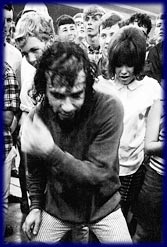 While
the Byrds’ studio sound was forged at World Pacific, it was at Ciro's Le Disc
that they became a true cultural force. It was here in early 1965 that the Byrds
first connected with an audience, which included a group sometimes referred to
as Vito and the Freaks. Led by sculptor/ dancer / ringleader Vito Paulekas,
whose “Clay Vito” art studio at 303 Laurel Avenue also served as a temporary
rehearsal space for the Byrds, the long-haired, colorfully-attired Freaks caused
a stir with their frenzied dancing at a time when the Twist was the wildest
thing going. Vito’s troupe had been dancing at local shows since 1962 (an
early favorite was the frat/horn band Jim Doval & The Gauchos), but it
wasn’t until they danced to the music of the Byrds that a genuine scene
coalesced, with music and dance feeding off each other in a first burst of
freedom. As much as the Byrds' music, the ecstatic gyrations of the Freaks made
Ciro's the place to be.
While
the Byrds’ studio sound was forged at World Pacific, it was at Ciro's Le Disc
that they became a true cultural force. It was here in early 1965 that the Byrds
first connected with an audience, which included a group sometimes referred to
as Vito and the Freaks. Led by sculptor/ dancer / ringleader Vito Paulekas,
whose “Clay Vito” art studio at 303 Laurel Avenue also served as a temporary
rehearsal space for the Byrds, the long-haired, colorfully-attired Freaks caused
a stir with their frenzied dancing at a time when the Twist was the wildest
thing going. Vito’s troupe had been dancing at local shows since 1962 (an
early favorite was the frat/horn band Jim Doval & The Gauchos), but it
wasn’t until they danced to the music of the Byrds that a genuine scene
coalesced, with music and dance feeding off each other in a first burst of
freedom. As much as the Byrds' music, the ecstatic gyrations of the Freaks made
Ciro's the place to be.
The Byrds cannily brought a small crew of these dancers, led by Carl Franzoni
(who did double duty as a roadie, along with soon-to-be Love guitarist Bryan
MacLean), on their inaugural U.S. tour, thus spreading the Freak gospel to the
hinterlands. Before meeting Vito in 1964, Franzoni, then already in his early
30s, had been a businessman, selling novelty items through the mail. Efram
Turchick asked him to share his memories of those days:
“Vito suggested that I might take some clay sculpting classes. This class
would only last 'til 10 o'clock, so at 10 o'clock all those people would pile
into their cars and go to the local dance hall. And it just increased. For the
first month or so I didn't dance. I went and watched them and looked what to do
[laughs] to see their improvisations. And then one night I just went out there
and I didn't stop. And I got out of the business I was in. I gave up my cars and
motorcycles and just would show up at the Whisky and places like that and dance
every night. And you gotta realize that I'm dancing right next to movie stars
and their producers were in those audiences too, they could see what we were
doing. And I got work out of it; they asked if I'd do movies and stuff like
that. I did it for a while, and then I got busted for something major, so I just
left town and I didn't even look over my shoulder. I came up north here, then I
went back there and found that [the case] was thrown out of court.
“Vito was looking for a band to play at a teenage dance on Melrose Avenue, at
a church, upstairs. We were interviewing bands, and a lot of bands came to
Vito’s, but the Byrds had an audition and didn’t show up. A friend of ours
went over to their house and called them a bunch of bums [laughs]. They had just
had all their equipment stolen in San Francisco, and they were kind of down, I
guess. Well anyway, they showed up the second time, and Vito hired them. The
dance was for Stop the War in Viet Nam. There were signs everywhere — Vito
made these signs and put them up. There were 200 people there. A lot of
teenagers. Tons."
“The next night was their first night at Ciro’s, and ... we walk in this
place, it’s a totally red room, lots of light, the best dance floor in
Hollywood, it’s about 40 feet by 60 feet, all the stars in Hollywood are
there; these guys have never played for them before. We stepped on the dance
floor, and from then on it was music and dance for months and months! All
right!"
“We were there at the start, maybe 15 of us, coming from this other dance the
night before, or maybe a couple nights before. They just pushed us in there, we
never paid. They said, ‘Come in, just come in.’ We were famous otherwise for
dancing to other groups, like the Gauchos from Fresno. The Gauchos had horns and
everything in their band, they were like a Top 40 band and played near Ciro’s
at another place. We would go back and forth to Ciro’s and sometimes they
wouldn’t even let us in because the place was so crowded."
“The teenagers in Hollywood latched onto these guys and called the teenagers
in the Valley, their friends, and ‘Mr. Tambourine Man’ was trying to get
started and on the radio, and those kids just wouldn’t let up. There were high
school kids from Fairfax High School and the Catholic school in Hollywood. They
wouldn’t get up off of ‘Mr. Tambourine Man,’ they just called and called
and called. Because it was the first white rock and roll group with that kind of
music and dance that they could relate to, you know."
“I went to [The Byrds'] house when they were on the bum. They had a little
pad, a cold-water pad, and they didn’t have any hot water in the place, and
they were miserable."
“My favorite Byrd was Chris [Hillman]. You know, when you’re on the dance
floor and you look up and you make contact with whoever it is, I always made
contact with the bass player. I could talk to Chris about what was happening.
David [Crosby] was cantankerous, but you knew that there was a fine artist
there. There was another guy who was not mentioned: Bryan MacLean. Bryan MacLean
was their roadie, and I helped him roadie. Him and I roomed together on the
road. He would have been the next Byrd, but Love liked him ... Arthur Lee liked
him. He beat [later Manson Family member] Bobby BeauSoleil out for their rhythm
guitar player spot, because we came and lobbied for him. They were auditioning
him and BeauSoleil and it was a tossup. Why I'm telling you this is we had gone
off the Byrds ... the Byrds were way past us then, they were traveling the
world, going to England. We weren't their people anymore, we had gone to other
bands. Jim [now Roger] McGuinn, one time in one of those rock and roll places,
he passed me and said, ‘You know, Carl, I'm sorry.’ [laughs] ‘I
apologize.’ and that was the last time I saw Jim.”
What was he apologizing for?
“Well, I think he didn’t realize what a good thing he had going with
dancers. He was apologetic because we just kept doing it, kept doing our dance,
and it just got better and better and it didn't STOP for us. I think what he
missed was the people that came around him. Not just us, but those teenagers
went to other bands."
“The Byrds were, in my estimation, the best dance band that Hollywood ever
saw, because they made people dance with that kind of music. Those guys were
forever fighting with each other, but when they got up there they really cooked.
Love, they weren't the dance band that the Byrds were and neither was Frank
Zappa. You had to do an improvisation to [dance to] Frank Zappa, you never had
to do an improvisation for the Byrds, because they were so miraculous ... the
combination of men, the different factions of what kind of music they came from,
it just was such a fantastic blend. I always think of dancing to ‘Bells of
Rhymney’ and like, it's a church, you know? So, when they brought that kind of
music in to Minnesota, Iowa, places like that, those kids were just, ‘Wow,
where did you come from?’ They could have started their own church with that
kind of music they were playing. That 12 string guitar really worked good.”
What other songs were favorites to dance to?
“‘Hey Joe.’ We would just yell and scream when David was doing that. He
would raise the temperature on that dance floor with that one."
“They asked me to pick a good amount of people to go with them [on tour] and
we became the Byrds’ dancers. The tour was really something! The first place
we went was Denver. We went into Minnesota, Youngstown, Ohio, Dayton, Ohio,
stuff like that, I mean it was something to see, the way we danced! The kids
were dancing in those lines at the time, line dancing, and we came in there and
we broke up all that stuff ... I got punched a couple times because they
didn’t like our style of dance! But after that the whole United States went
into that style. We were trained dancers. Vito had studied with some really fine
dance teachers in Hollywood. We had a formal place we went to, and the people
who were right after us were Toni Basil and David Winters. They were the shit,
big time dancers, and they would sit and watch us, and take what we were doing,
and add it into their stuff.”
What was the atmosphere like on the bus as you toured around the country?
“Well, I brought some women, some good looking women that they could relate
to. But they didn't really have to worry about that, girls were knocking on
their doors as soon as they got in the hotel rooms! But it was pleasant for them
to have a couple of the dancers there — they could talk to them and stuff like
that. For the most part the women were really good dancers. I had to pick the
best I could find. There was a guy who came with us — they didn't want any men
— they really didn't want any guys. But I convinced them that this guy Bob
Roberts should come. Bob Roberts became a saxophonist with Frank Zappa and
Reuben and the Jets, and then he became a big-time tattooist in Hollywood. I was
the freak, because I had my own kind of uniform: tights and boots and crazy
looking shirts.”
It's a pretty unique situation where a band would take a whole bunch of dancers
on the road with them like that.
“Yeah! That was the only one that ever did it for me! I went with Frank Zappa,
but I went solo. He couldn't afford it. They [The Byrds] were ready to take us
to England to show the English how to dance. We had a small nucleus of dancers
and could have taken them to London and then those fucking Beatles wouldn't have
been so uppity. I decided not to go. Derek [Taylor, Byrds publicist] wanted us
to come to this high school gym and he was having people come and take photos
and I just walked out of it. That's why they fired me.
“I still dance. I still can do an hour. I'm 68, I can still do it. Once you're
a dancer you can still do it. My friend Vito, a week before he died, he was 79,
he was out on that dance floor.”
* * * * *
from another source
Who Were They?-- Vito Paulekas, Rory Flynn, Emerald, Karl Franzoni, Suzy Creamcheese (Pamela Zarbica), Linda Bopp, Szou, Beatle Bob, Butchie, Karen Yum Yum.
* * * * *
|
and that's not all ! tom wyma has one of vito's sculptures and kindy sent us a picture.
|
|
| artwork by vito paulekas. the piece is
entitled "hollywood" (picture by tom wyma) |
* * * * *
and back to today, where andre cholmondeley gives us the latest info on
project/object:
Hello folks
Andre' here of Project Object ; first lemme welcome a whole lot of new email
subscribers... THANKS for the support. Here we have the updated March-April 2003
PO tourdates. All of 'em confirmed and on sale , with just one date (3/24) more
getting locked down if all works out.
Also - check the tourdates page at the website for printable info for each club.
We're really psyched about this tour - as it brings together for
the first time in Zappa history three of his greatest bandmembers - Ike Willis,
Napoleon Murphy Brock & Don Preston. We will celebrate the entire 22 years
of Zappa's touring/recording career, as these three gentlemen represent every
era within that time!! With Don on board, and with Don and Napoleon fresh from
their trip to Germany to do Mothers material - the band can dig even deeper into
the Mothers era, and the pioneering improv/electronic synth spirit that Don
Preston brought to the Mothers specifically, and to the rock
world in general. Don't miss it.
BTW - thanks for immediately supporting the new live CD!! "The Dream Of The Dog" is over 76 mins of pure live, unfettered improv. Electronics, rock and roll, prog grooves, spoken word and W samples collide in a celebration of "Can you do that onstage anymore ??" It was recorded ontour in 2002. No overdubs. The initial shipment that Cdbaby had has sold out!! So - go over to the page, www.cdbaby.com/projectobject ---check out the music, and leave 'em your email, they will inform you when the CD is back in stock in a couple days.
*NEW CD AVAILABLE FOR ONLINE PURCHASE!!!!*
Project Object LIVE - The Dream of the Dog
Surf to http: file://www.cdbaby.com/projectobject
Winter/Spring 2003 "TOUR of DUTY"
Project/Object with Ike Willis, Napoleon Murphy Brock and Don Preston
Performing The Music Of Frank Zappa
Ike Willis - Voc/Gtr - Zappa band 1978 - '88
Napoleon Murphy Brock -Voc/Sax Mothers/Zappa band 1973-77, 79,84
Don Preston - Keys/Synth -Mothers of Invention/Zappa 1966-'74
Andre Cholmondeley gtr/voc
Dave Johnsen bass
Glenn Leonard drums
* * * * *
the latest addition for the project/object concerts is:
2003/03/24
project/object concert ‘new
belmont’, norfolk, va, usa
check
the other dates in the "agenda" section, or at
"project/object" or at the official project/object site !
* * * * *
More dates pending!! Check back often .
Check out the Project Object Newsgroup!! alt.fan.project-object
CRANK SOME FRANK !!!
Daniel Carter/andre' Cholmondeley- LIVE Jan 24/2003
http://www.doctorcosmo.com/wprb/mwos03/0124/0124.html
There is the archived audio for the WPRB show I did 3 weeks back with Daniel
Carter. Lotsa cool pix, they were very kind to us.
* * * * *
the allan zavod
biography (swell job by geoff wills) has been censored a bit. i
received a nice e-mail from australia. one that i could not resist.
so now, the middle part of the bio reads a bit like this:
|
In In Cold
Sweat: Interviews With Really Scary Musicians, Scott Thunes –
never a man to mince words – is more explicit. He says... I have to admit that i was impressed... Solicitors reading united mutations ?? |
sorry geoff. (i'll forward you the e-mail message - it's
funny)
and those who really want to know, will have to read the book. or one of
the magazines that it originally appeared in.
* * * * *
| new releases | |
|
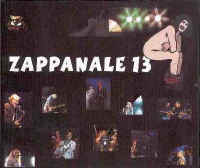 |
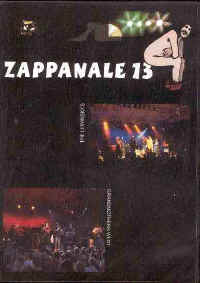 |
|
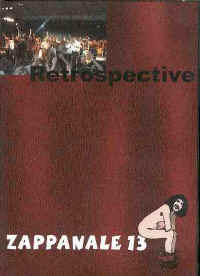 |
|
|
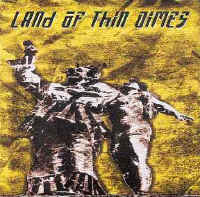 |
|
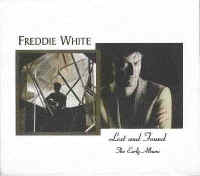 |
* * * * *
and i added a bit of 'older' data as well:
last year's zappanale festival was good for quite a lot of new entries, additions and/or corrections:
there must be a lot more to tell about these artists, so if anyone has info that i can include, send it to bignOte@yucom.be
more news
* * * * *
and here's the arf shop message i mentioned earlier:
----- Original Message -----
Sent: Tuesday, February 25, 2003
Subject: Arf Shop - News 02/03
Dear
ARF-Customer!
What? Technical problems with ARF merchandise? First of all, we're very unhappy
that our merchandise isn't satisfactory: We at the ARF Shop want to make sure
you get what you pay for, and we're sorry if your DVD doesn't fit or the T-Shirt
has jammed your disk drive!
Seriously: We have been experiencing difficulties with the new DVD and have heard of isolated cases in which it just won't play. Our technicians have not yet been able to find the proper problem solution. We are indeed surprised to encounter this, as we place a high value on the quality of DVD production.
The ARF Shop wants to make sure you remain satisfied with The Best in ARF merchandise! We're glad to offer to take the DVD back and refund your money or, if you prefer, to issue you an equal amount in ARF Shop Credit for more swell ARF stuff!
If you'd like to return the DVD, please mail it to
Arf Society e.V.
Am
Markt 3
18209
Bad Doberan
GERMANY
Please make sure to include a short note with your name, address etc. and a short description of the problem.
Also let us know whether you'd like an ARF Shop credit or whether you'd like your money back. In case you'd like a refund, don't forget your bank information (name of bank, international routing/bank ID no., account number). We'll reimburse you for the DVD!
Most of all we want to do everything we can to make sure you remain a satisfied ARF customer! Please let us know if we can help any further.
Yours,
The ARF Shop
*
* * * *
the latest afroskull newsletter says:
Greetings
once again, friends of the funk. Happy Mardi Gras! Hope all our
friends down in New Orleans are living it up right now...
Afroskull has a couple of shows in Manhattan coming up over the next two weeks
that you need to be at.
Friday, 3/7 - Tobacco Road - 41st St. and 9th Ave, NYC - 10pm
Afroskull returns to Tobacco Road after a three-month hiatus, and we intend to
groove that place down to its foundations...
Saturday, 3/15 - Parkside Lounge - 317 E. Houston Street @ Attorney St. - 12
midnight
This will be our first gig at the Parkside Lounge, as part of a big lineup of
funk, rock and hip-hop (bet you can't guess which one we are). The
lineup is as follows:
A MOMENT OF CLARITY 9PM-9:45
PHOENIX & THE SHADOW 10PM-10:45
The CORPORATION 11PM-11:45
AFROSKULL 12AM-12:45
Hope you can make it to one or both shows. Remember, check out
Afroskull.com for mp3s, to order t-shirts and CDs, and for the latest Afroskull
gig information.
NO FUNK, NO PEACE
-Afroskull
* * * * *
i included a couple of arf issues to the frank zappa fanzine picture section:
| the arf-dossier no.30 - 2002/03
incl.
|
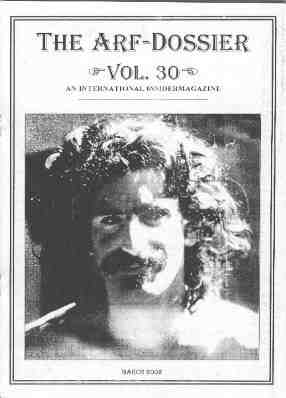 |
| the arf-dossier no.31 - 2002/06
incl.
|
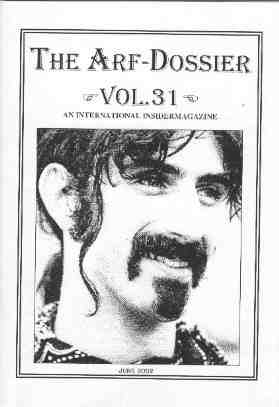 |
| the arf-dossier no.32 - 2002/09
incl.
|
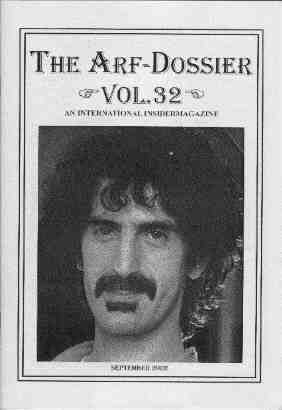 |
| the arf-dossier no.33 - 2002/12
incl.
|
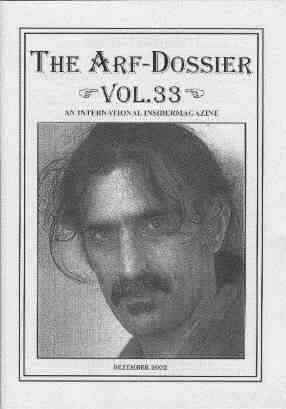 |
* * * * *
danny mathys did send in a persuasions
discography. thank you danny.
* * * * *
chad wackerman
contributed to the latest allan holdsworth release. very good (in
danny's words), but japanese and hard to find / expensive.
* * * * *
and a couple of new frank zappa bootlegs have been spotted:
|
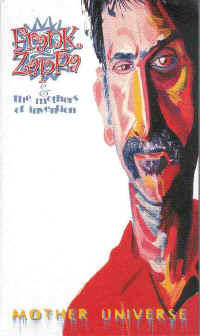 |
|
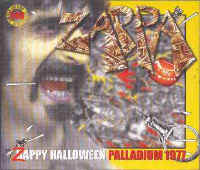 |
well, that's all for now,
peace, and try to catch the residents on tour ! they were absolutely
great.
want more?
go to:
http://www.idiotbastard.supanet.com/you-call-that-news-/odyframe.htm
http://www.geocities.com/pdoelder.geo/index.html
or visit again next week.
talk again to you soon,
-- peter van laarhoven